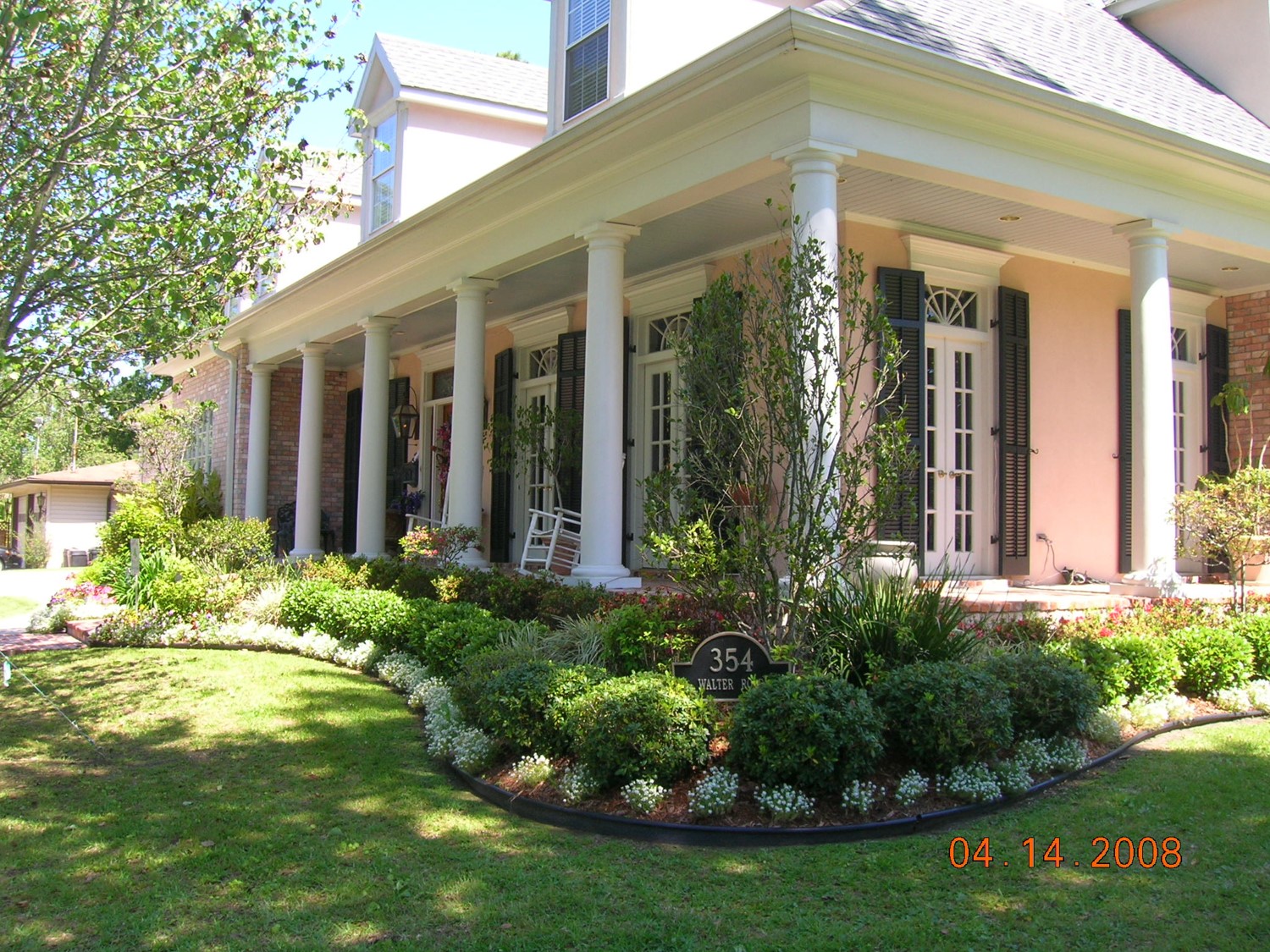There's Only One Time To Make A First Impression!
If you are considering selling your home, does your home make a good first impression?
RE: Brent Jeansonne, Gail Hansen
Curb appeal may increase the real estate value of your property by as much as 15 to 20%. From a real estate point-of-view, its the view they see when they drive by or arrive for a showing. How your home presents itself from the road can actually make or break the sale. Remember, you have only one time to make a first impression! In general, there should be a sequence as visitors walk to the front door: a foreground, middle ground and background. By using a creative eye, you can add Personality to your home and from the road give any visitors a landscaping “wink” that says “Welcome“. It’s a visitor’s First and Last Impression of your home. Creating a “Feeling” about the residence.
So, how do you create this affect? In nature, plants grow in clusters and drifts, extending to overlap and interlock in layers as they merge with each other. It is helpful to study the composition of natural massing’s of plants and use similar patterns to arrange plants in a planned landscape. Pattern is produced both with layers and repetition. Plant layers occur vertically with variation in height and horizontally with plant masses along the ground plane. Pattern also occurs through repeated use of plants or through the repetition of a physical characteristic of plants, such as form, color, or texture. When organizing plants, the first step is to create the vertical and horizontal layers and then create a repeating pattern of plants within the garden to visually connect the garden spaces.
Creating Vertical Layers with Plant Material
The lowest layer of vertical plants is the ground layer. These are the low plants, including turf, that grow about 6 inches high to cover the bare soil and serve as the baseline of the composition. The foreground layers, plants that are 6 inches to 2 feet, represent the next vertical change from the ground. Small masses of the lowest of these plants form the edge of plant beds and serve as the transition to the larger plants. The midground layer consists of plants from 2 feet to 5 feet. These plants take up most of the space in the composition and serve several functions, including providing spatial definition, linking the lower layer and buildings or tall plants, and creating color and texture throughout the yard. The tallest layer, the background plants, consists of trees and large shrubs that are often used for screens to block views or as canopies for shade. In addition to varying in height from front to back, the height should also vary from side to side along the top of the plant material. The height should undulate from high to low and back to high along the horizon. Try to avoid large gaps in the vertical heights, such as jumping from the foreground layer to the background layer, unless the intent of the design is to have dramatic differences in the layers, a technique that is often used in contemporary design.
REFERENCE: UF/IFAS; Gail Hansen; LANDSCAPE DESIGN – EP44900
For more Information or Discussion, Please comment in the “Leave a Reply” space below.



